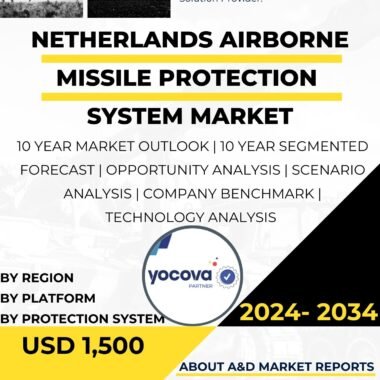Description
The South Korea hypersonics missiles market has emerged as a key focus area within the country’s defense industry due to the growing importance of hypersonic technology in modern warfare. Hypersonic missiles offer unparalleled speed, range, and maneuverability, making them highly desirable for deterrence and precision strike capabilities. As regional security challenges evolve and adversaries develop advanced missile systems, South Korea’s investment in indigenous development and strategic partnerships is aimed at maintaining a competitive edge and bolstering its national security.
Hypersonic missiles are a new class of weapon systems that can travel at speeds exceeding Mach 5 (five times the speed of sound) and possess the ability to maneuver at high altitudes and low altitudes. This combination of speed and agility presents significant challenges for traditional missile defense systems, as hypersonic missiles can rapidly close the distance to their targets, reducing response time and increasing their lethality.
South Korea’s interest in hypersonics is largely driven by the need to counter evolving security threats in the region, including North Korea’s ballistic missile development and other potential adversarial advancements. The capability to develop and deploy hypersonic missiles provides South Korea with a critical deterrent and a means to ensure its military superiority.
In response to these emerging challenges, South Korea has undertaken initiatives to develop indigenous hypersonic missile technology. The country’s focus on self-sufficiency in defense capabilities has led to the establishment of research and development programs to design and test hypersonic missile systems. Homegrown expertise in hypersonic technology allows South Korea to reduce its dependence on foreign suppliers and maintain control over critical defense assets.
South Korea’s defense industry has made significant progress in developing hypersonic missile technologies. The Agency for Defense Development (ADD) and various defense companies, such as Hanwha Defense and LIG Nex1, are actively engaged in research and development efforts. These initiatives aim to create hypersonic missiles that can be integrated into different platforms, including ground-based launchers, aircraft, and naval vessels.
One of the key projects in South Korea’s hypersonics program is the development of the Hyunmoo-4 missile, an air-launched hypersonic missile. This missile is intended to provide the South Korean Air Force with a versatile and highly effective precision strike capability. Additionally, South Korea has expressed interest in developing a ground-launched hypersonic missile to bolster its land-based deterrence.
In tandem with indigenous development, South Korea also seeks strategic partnerships with international partners to enhance its hypersonics capabilities. Such partnerships offer access to advanced technologies and expertise in hypersonic missile development. Additionally, international collaboration enables South Korea to share the costs and risks associated with developing such cutting-edge systems.
The quest for hypersonic technology is not limited to offensive capabilities. South Korea also recognizes the need to develop robust hypersonic missile defense systems to counter potential threats from adversaries. While hypersonic defense remains a significant challenge due to the speed and agility of these missiles, South Korea is actively investing in research and development to devise effective countermeasures.
The development of hypersonic missiles also involves cutting-edge materials and propulsion systems. South Korea’s focus on advanced materials research and the development of high-performance engines has direct implications for other areas of its defense industry, contributing to technological advancements across various defense domains.
However, the development of hypersonic missile technology comes with challenges. Hypersonic flight involves extreme temperatures and aerodynamic stresses, which pose significant engineering obstacles. Overcoming these challenges requires continuous research and testing, as well as investments in specialized facilities to support hypersonic research and experimentation.
South Korea’s pursuit of hypersonic missile technology aligns with its broader defense strategy, which emphasizes maintaining a strong and technologically advanced military. The country’s investments in hypersonics reflect its commitment to staying at the forefront of emerging defense technologies and enhancing its military capabilities.
As regional dynamics continue to evolve, South Korea’s hypersonic missile market will likely witness further advancements. The potential deployment of operational hypersonic missile systems will significantly impact the country’s deterrence posture and its ability to respond to evolving security challenges effectively.
In conclusion, the South Korea hypersonics missiles market is a critical aspect of the country’s defense industry. Indigenous development, strategic partnerships, and investments in cutting-edge research and development reflect South Korea’s commitment to maintaining a competitive edge and ensuring its national security. As the security landscape evolves and hypersonic technology continues to mature, South Korea’s pursuit of hypersonic missiles will remain integral to its overall defense strategy.




